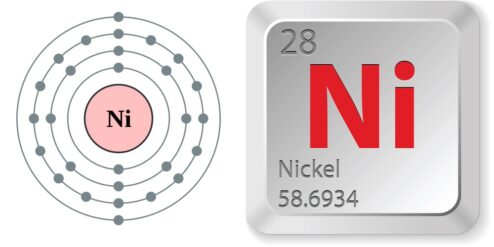Understanding the nutritional composition of the food we consume is crucial for maintaining a balanced diet. One such food is the banana, a staple in many diets worldwide due to its rich nutrient content. However, there’s been some discussion about whether bananas contain nickel, a trace mineral. This article delves into the composition of a banana, explores the presence of nickel in various foods, and assesses the impact of nickel on human health.
Understanding the Composition of a Banana
Bananas are a rich source of several essential nutrients, including dietary fiber, vitamin C, potassium, and vitamin B6. They are low in calories and virtually fat-free, making them a healthy choice for most diets. Bananas also contain trace amounts of other nutrients, such as magnesium, copper, and manganese. However, the presence of nickel in bananas is a topic that requires further exploration.
The nutrient composition of a banana can vary depending on its size and ripeness. A medium-sized ripe banana typically contains about 105 calories, 27 grams of carbohydrates, 3 grams of dietary fiber, and 1 gram of protein. It also provides 12% of the daily value for vitamin C and 20% for vitamin B6.
Bananas are also known for their high potassium content, providing about 422 milligrams per medium banana. This mineral is essential for heart health and proper functioning of the nervous system. Despite their nutrient-rich profile, bananas are often overlooked for their potential trace mineral content, including nickel.
The presence of trace minerals in bananas, like all fruits, is influenced by several factors. These include the soil in which the banana tree is grown, the use of fertilizers and pesticides, and the banana’s maturity at the time of harvest.
Tracing Nickel Presence in Various Foods
Nickel is a trace mineral found in the earth’s crust. It naturally occurs in many foods, particularly those grown in nickel-rich soil. Nickel can also enter the food chain through water, air, and soil pollution.
Common foods that contain nickel include nuts and seeds, whole grains, chocolate, and certain types of fish and shellfish. Vegetables like spinach, lettuce, and asparagus also contain nickel. However, the nickel content in these foods is generally low and not a cause for concern for most people.
The human body requires trace amounts of nickel for optimal health. However, excessive nickel intake can lead to health problems, particularly for those with nickel sensitivity or allergy.
It’s also worth noting that the method of food preparation can influence the nickel content. For instance, cooking in nickel-plated utensils can increase the nickel content in food.
Exploring the Nickel Content in Bananas
The question of whether bananas contain nickel is not straightforward. Like many fruits, bananas can contain trace amounts of nickel. However, the nickel content in bananas is generally low and varies depending on several factors.
These factors include the soil in which the banana tree is grown, the use of fertilizers and pesticides, and the banana’s maturity at the time of harvest. Bananas grown in nickel-rich soil or exposed to nickel-based pesticides may contain higher levels of nickel.
However, even in these cases, the nickel content in bananas is typically low. For most people, consuming bananas does not pose a risk of excessive nickel intake.
For those with nickel sensitivity or allergy, it’s advisable to consult with a healthcare provider to assess the potential risk.
Impact of Nickel on Human Health
Nickel is a trace mineral that plays a role in several bodily functions. It’s involved in the production of certain enzymes and contributes to the health of the skin and bones.
However, excessive nickel intake can lead to health problems. These include skin rashes, respiratory problems, and in severe cases, kidney damage and cancer.
People with nickel sensitivity or allergy are particularly at risk. Even small amounts of nickel can trigger allergic reactions, including skin rashes and inflammation.
For these individuals, it’s important to monitor nickel intake and avoid foods with high nickel content.
How to Reduce Nickel Intake from Bananas
For most people, the nickel content in bananas is not a cause for concern. However, for those with nickel sensitivity or allergy, there are ways to reduce nickel intake from bananas.
Firstly, choose organic bananas. Organic farming practices typically involve the use of fewer pesticides, which can reduce the nickel content in the fruit.
Secondly, consider the maturity of the banana. Riper bananas may contain less nickel than their less ripe counterparts.
Lastly, consider the way you prepare your bananas. Peeling the banana can help reduce its nickel content, as the skin can absorb nickel from the environment.
Conclusions: Are Bananas a Source of Nickel?
In conclusion, bananas can contain trace amounts of nickel. However, the nickel content in bananas is typically low and not a cause for concern for most people.
For those with nickel sensitivity or allergy, it’s advisable to monitor nickel intake and choose foods accordingly. While bananas can be part of a balanced diet, it’s important to consider the overall diet and lifestyle for optimal health.
Per approfondire:
- National Institutes of Health: Nickel: This link provides comprehensive information about the role of nickel in human health and its sources in the diet.
- USDA FoodData Central: Bananas: This link provides detailed nutritional information for bananas, including their mineral content.
- American Academy of Allergy Asthma & Immunology: Nickel Allergy: This link provides information about nickel allergy, including its symptoms and management.
- Environmental Working Group: Pesticides in Produce: This link provides information about the use of pesticides in agriculture, including their impact on the mineral content in fruits and vegetables.
- Harvard Health: Trace Minerals: This link provides information about the role of trace minerals, including nickel, in human health.


